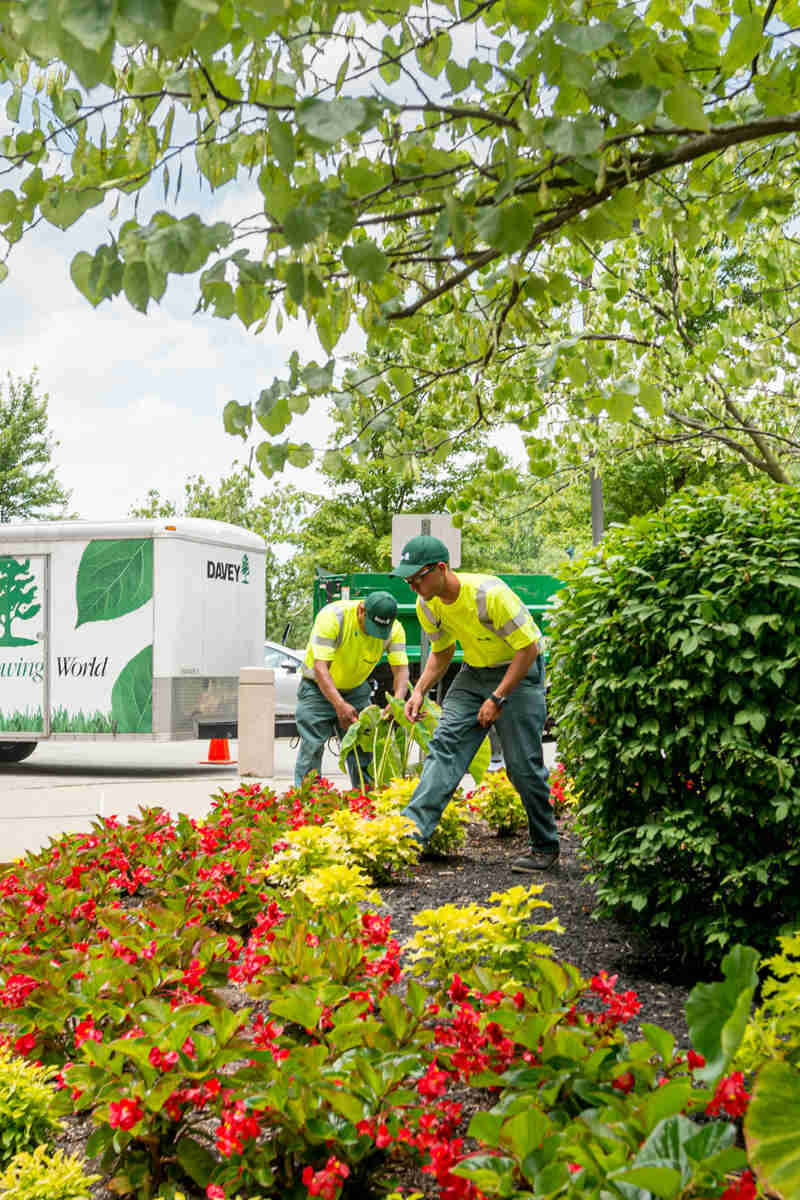As the 2023 growing season winds down, looking back on what your commercial landscape has gone through is always a good practice.
This can tell you what you did well and point to areas that need improvement and even help you target your budget dollars for the next year.
This year, across the country, commercial properties have dealt with quite a bit – from unpredictable weather and wildfires to invasive pests.
Let’s take a look at some of this year’s challenges and how commercial properties best manage them so we can all learn about how we can conquer similar issues in coming years.
Unforeseen Challenges
When we look back at the 2023 growing season, there was certainly no shortage of severe weather events.
To start, there were record cold temperatures in Nashville, Tennessee that damaged plants and trees, causing premature defoliation. This slowed the official start of the growing season, making property managers scatter to find fast fixes. While the aesthetics weren’t pretty for a bit, being patient and waiting to see if the trees were able to protect themselves and recover was the goal.
Then beginning in late April 2023 and continuing through summer, the smoke from the Canadian wildfires impacted plants in the Northeastern U.S. It blocked sunlight from reaching plant tissue and inhibited plants from carrying out their normal growth function, such as taking in nutrients. Keeping up regular tree inspection and grounds maintenance, including proper watering and mulching, helped limit tree stress.
Also in the Northeast, storms caused some massive commercial landscape damage. From flooding in Vermont to heavy rain and wind damage from Hurricane Lee, property managers had to quickly clean up damage and restore impacted areas.
Mild Winters, Aggressive Pests
Mild winters might be great for reducing your need for managing snow and ice removal on your commercial property, but they raise the likelihood of other problems: pests and diseases.
Colder winters usually help limit pest and disease survival from year to year, but when temperatures stay mild, unwanted infestations get a head start in spring on your commercial site.
This has happened across the country with quite a few invasive species and tree diseases.
In Colorado, the emerald ash borer continued its spread westward. This pest has no natural predators in the U.S., which can negatively impact areas planted heavily with ash trees. Property managers had to hire ISA Certified Arborists® to help with diagnosis, treatment, and preventative tree care steps to reduce tree deaths and replacements.
On the other side of the country, beech leaf disease has been contributing to significant tree decline in Ohio, Pennsylvania, New York, New Jersey, Maine, Connecticut, Rhode Island, and Massachusetts, among other places. Bringing in a local certified arborist to address these issues is important for catching problems early and coming up with a management plan.
The mild winter also elevated populations of the spotted lantern fly in mid-eastern states like Pennsylvania. This invasive species attacks oaks, maples, and fruit and nut trees. In severe cases, the entire tree can wilt, while the trunk shows open, oozing wounds. Proper identification is the key to controlling spotted lantern fly. Identifying egg masses early and properly disposing of them can limit infestations.
Drought-Related Issues
Weather can also impact plants at your commercial facility, especially in the wake of climate change.
A dry spring throughout most of the country not only prolonged the allergy season in Las Vegas, but it also diminished spring color in areas like Washington, D.C. This also leads to duller fall color.
Fall color actually arrived a little early in Maine as a result of dramatically changing weather patterns. Cooler temperatures and shorter days typically enhance the progression of leaf colors. Crisp August mornings that lead into hot, humid September afternoons brought out color before mid September. Rain also is supposed to amplify color, but then the unusual heat delayed the autumn show.
Proper tree care is always a tool property managers can use to ensure they don’t stress trees and further delay or diminish fall color on their commercial sites.
Wrapping Up the 2023 Growing Season
In commercial grounds management, expecting the unexpected is a good plan to follow. After all, Mother Nature doesn’t always deliver predictability.
Davey’s commercial grounds maintenance experts can help you with your property’s challenges with our 140 years of experience. As we continue to face new challenges, you can count on us to support your needs with scientific expertise; a commitment to safe, high-quality work; and a strong, reliable partnership.



